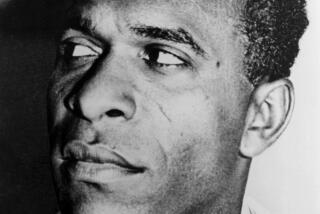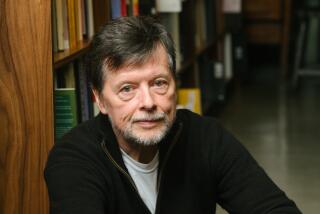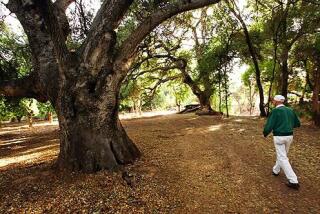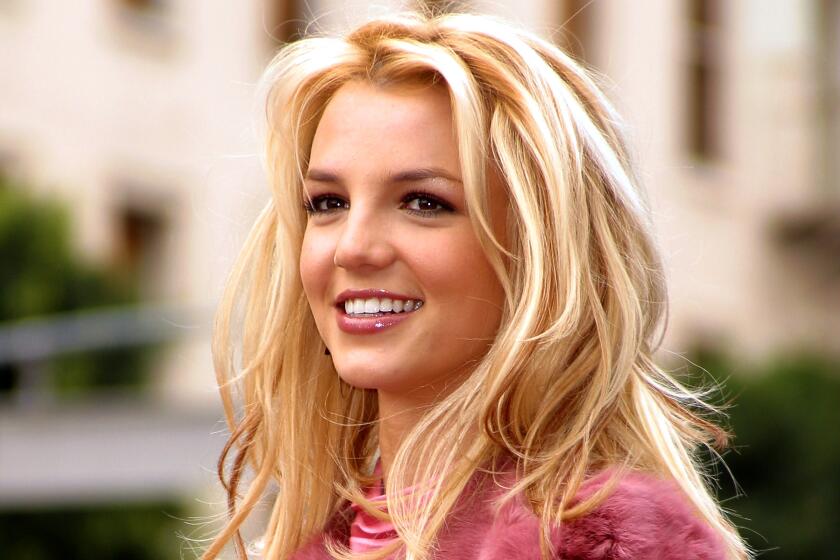Nature’s Miracle
- Share via
Who was Buffon? Two hundred years after his death in 1788, this great French naturalist-philosopher is unduly neglected if not virtually forgotten. Buffon’s work in the 18th century helped lay the foundations for the great flowering of biological science in the 19th century. Or, to put it another way, Buffon made Charles Darwin possible.
Buffon dominated the thought of the 18th century, and it would be difficult to overestimate his impact on the Enlightenment and the Romantic movement and on evolutionary thinking. As a writer, he was without peer. Declared Rousseau: “His is the most beautiful pen of this century.”
Now, at long last, Jacques Roger, the late great historian of France’s 18th century, has given us the first thorough study ever made of the incomparable Buffon. How wonderful that Roger’s masterful study of Buffon and his work is now available in an admirable translation. For this biography is also a splendid overview of the intellectual history of the 18th century. Roger deals not only with France but also with the great philosophers and naturalists in England, Holland, Switzerland and Germany, with whom Buffon had contact. How wonderful of Cornell University Press to bring out an English edition.
If Buffon is remembered at all today, it is as the author of a famous “Natural History,” which presented delightful descriptions of hundreds of species of mammals and birds, from horse and dog, to elephant and manatee, to finch and toucan. Buffon made these life histories the vehicle for philosophical discussions and for the proposal of new biological theories. The animal life histories, for example, are interspersed with numerous lengthy essays on such subjects as “The History and Theory of the Earth,” “The History of Animals,” “The Natural History of Man” and “View of Nature.” These were often book-sized essays that had a major impact on his time.
Buffon was born in 1707 as Georges-Louis Leclerc, member of a well-to-do bourgeois family in the town of Montbard in Burgundy, and was ennobled later as comte de Buffon. He had an excellent education in a Jesuit lycee in Dijon, where he joined an intellectual circle of friends who inspired his interest in science and philosophy. Even though he earned a law degree, he decided to devote his life to these other interests.
From age 25, he simultaneously pursued two careers: that of a land owner in Burgundy, where he spent at least half of each year, and that of a scientist in Paris. Even though he eventually became one of the most influential people in Paris, he really never became a true Parisian.
But Buffon was not just a naturalist and philosopher. With his restless mind, he undertook ever new enterprises. Building, for instance, a forge near his property, he tried to develop new methods of iron making from local ores. He had the greatest success in all of his enterprises as an intendant of the Royal Botanical Garden in Paris (and, in connection with it, the Natural History Museum). Under him, the garden became one of the best in Europe, and the museum was an extraordinary success. It became the leading research institution in its field in the world. The names Lamarck, Cuvier and Geoffroy St. Hillaire indicate some of its 19th century glory.
The cornerstone of his work, however, was the 35 volumes of “Natural History,” which occupied him for nearly 40 years. The first three volumes, published in 1749, were an unprecedented success. One printing after the other sold out. Eventually, “Natural History” became the most widely read work of the 18th century, outselling even the best known works of Voltaire and Rousseau. One simply was not educated unless one had read “Natural History.”
The naturalist Aristotle (rather than other philosophers or Scholastics) was the example Buffon decided to follow. He had set the example of what a general natural history should be by using the methods of comparison and generalization. “Natural History” was to be a scientific treatise, completely separated from religion. The theologians, of course, could not tolerate this, and Buffon was censored by the theological faculty of the Sorbonne. He had to publish a retraction and had to be very careful in his later writings about how he presented his non-creationist history of the Earth.
Where Buffon differed so conspicuously from Linnaeus was in downgrading the structural differences among kinds of animals in favor of their behavior and ecology. Buffon described animals as one would meet them in nature, hence he paid special attention also to their relationship to man and “the services they can render us, and all the uses or commodities we can obtain from them.”
Buffon admired nature: “Nature is more beautiful than art, and the freedom of movement of living beings makes Nature beautiful.” Indeed, he was very much what we would now call an animal lover: “Is not man . . . the most harmful species of all? He alone slaves, annihilates, more living individuals than are devoured by all carnivorous animals.” And Buffon complains bitterly over the cruel treatment of domestic animals.
Roger has helpfully compiled from the numerous volumes of “Natural History” what Buffon wrote about the balance of nature and animal ecology. Like the natural theologians, Buffon very much believed in a balance of nature, a steady state equilibrium of populations.
Man was always a main subject of Buffon’s “Natural History.” Here he had to avoid the suspicion of materialism and yet attempt to stay loyal to the naturalist’s method. Therefore, Buffon accepted Cartesian dualism, the orthodox doctrine of the Church. And as a further result, he stressed the difference between man and the animals, mostly based on now obsolete ideas about the differences between human and animal behavior.
Buffon was a very independent thinker, and he continuously challenged all the existing schools of the day: the Cartesians, the mathematicians, the taxonomists, the theists and deists, the Platonic idealists and the followers of Newton. No wonder he encountered massive hostility, but he achieved what he evidently aimed for: Everybody read him. His criticism was not purely negative, but he continually advanced new ideas, some quite bad but many of them with a permanent impact. For instance, his claim that “the great worker of nature is time” finally brought time into the philosophy of science. Time had been almost totally ignored by Descartes and Newton and, of course, did not really get its proper consideration until after 1859, when Darwin’s “Origin of Species” was published.
Buffon was the founder of biogeography. Linnaeus and all other theists had all animals originate in one place. Buffon realized that each species was adapted to a different environment and postulated that each had originated where the appropriate environment had occurred: the camel, for instance, originated in Arabia. Comparing the faunas of the New World and the Old World, Buffon made the remarkable discovery “that no one before us had even suspected, that is, that no animals of [the tropics] of either continent are found on the other.” Buffon also unhesitatingly admitted the extinction of some species, such as the mammoth. His conclusion was most unpalatable to his contemporaries, including even his disciple Lamarck.
Roger shows how similar Buffon’s species concept was to the modern biological species concept and how vigorously Buffon defended it against Locke and other nominalists. Although Buffon did not have the concept of populations, he based his definition on the possibility of individuals to reproduce successfully and to share a common descent. By providing a full discussion of Buffon’s difficulties with the species concept, Roger illuminates the general confusion among all writers on the species problem, a confusion that has continued for 200 years.
In spite of all his differences with Linnaeus, Buffon adhered, as he did, to the time-honored basic principle of classification “of putting together things that resemble one another, and to separate those that differ from one another.” But Buffon did not adopt a hierarchical classification, saying that higher taxa such as genera and families did not exist in nature.
After having devoted 25 years to the study of living creatures, Buffon returned to inanimate nature, which he had already dealt with in some essays included in the first volumes of his “Natural History.” His publications during the last 20 years of his life were dominated by the history of the Earth. In his “Epochs of Nature,” he charts the life of the planet from its beginning as a ball of fire to the origin of mankind. Although written as a series of origins, it was an evolutionary history. Perhaps more than any other publication at the time, “Epochs of Nature” promoted evolutionary thinking. Its evolutionary tendency was so compelling that it could not fail to influence its readers. And this it did indeed.
There are many reasons for Buffon’s immense success. Everybody admired his lucid, almost poetical style. Equally important was his willingness to discuss virtually all scientific and philosophical controversies of the day, whether it concerned the nature of the soul, Berkeley’s denial of reality, the nature of generation or the place of man in nature. Indeed, his inclusion of man in almost all of his discussions made his writings particularly attractive to his readers.
As Roger says so rightly of his hero, “Buffon was the most important naturalist between Aristotle and Darwin. . . . I admire his intellectual daring, his willingness to understand and to accept the empire of human reason as far as possible, and, behind the facade of conformity, his spirit and his rejection of ready-made ideas.”
It is notoriously difficult to write a good biography of a great thinker. Just how difficult is shown by the more than a dozen long biographies of Darwin published in recent years. All focus on Darwin the man and on his public and family life. None attempts to provide an analysis of his work and that, after all, is what one really wants to know most about.
Roger in “Buffon” provides the perfect example of what a fine biography should be. He not only presents Buffon as a person, he also gives a most illuminating critical analysis of Buffon’s thoughts, beliefs, theories and controversies. Roger’s superb knowledge of science and philosophy in the 18th century permits him to examine Buffon’s theories against the prevailing thinking of his time. Along the way, we also encounter all the great thinkers of the 18th century. We must be grateful to Roger for having brought Buffon back to life.
More to Read
Sign up for our Book Club newsletter
Get the latest news, events and more from the Los Angeles Times Book Club, and help us get L.A. reading and talking.
You may occasionally receive promotional content from the Los Angeles Times.










